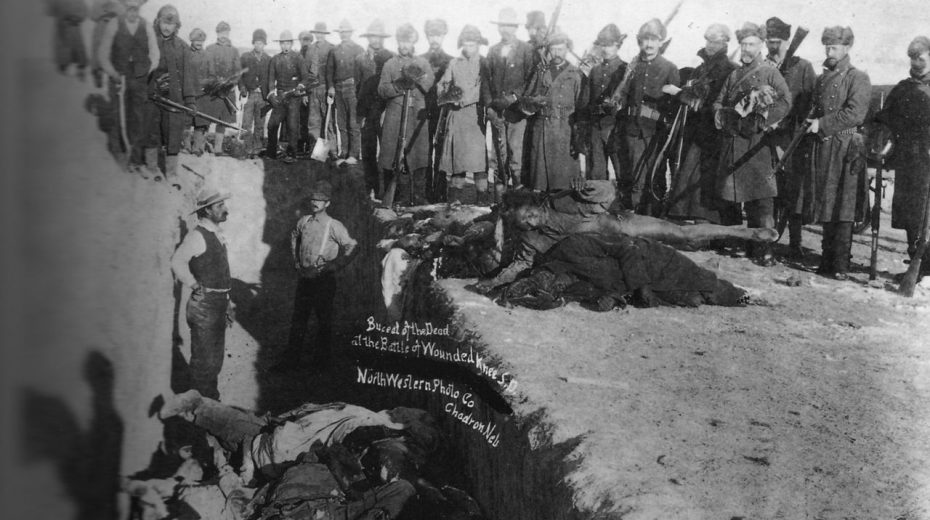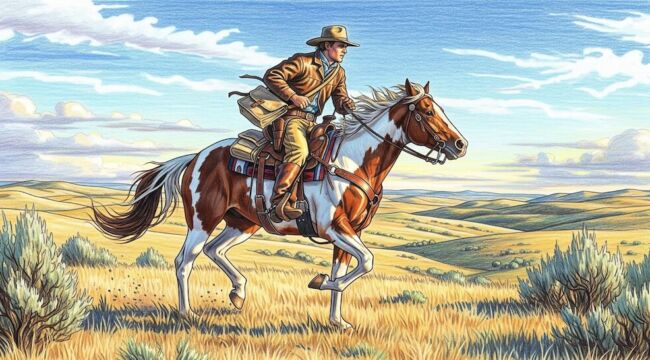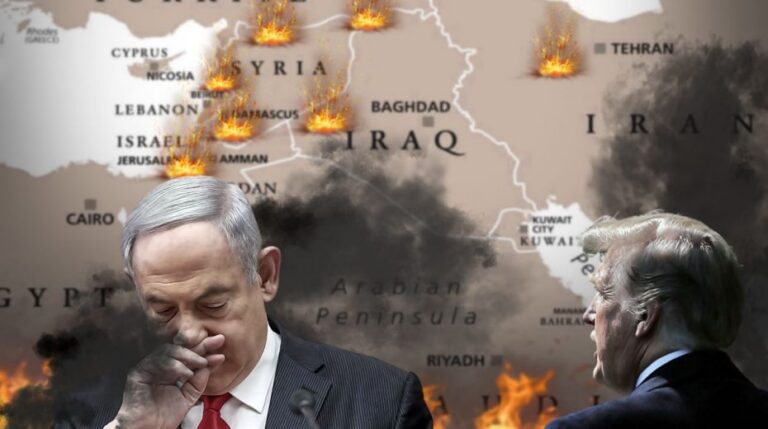
By Tom MACKAMAN
War Secretary Pete Hegseth has declared that 20 US soldiers involved in the 1890 massacre of hundreds of Lakota men, women, and children at Wounded Knee will retain the Medals of Honor awarded to them.
The Wounded Knee Massacre took place on December 29, 1890, during a bitter winter day when the US 7th Cavalry killed approximately 250 to 300 Lakota Sioux, including men, women, and children, near Wounded Knee Creek in South Dakota. Following this event, 20 soldiers received the Medal of Honor, the military’s highest award.
In a video posted on X late Thursday, Hegseth explained that a review board had recommended last year that the soldiers keep their medals, and he upheld that verdict. “We’re making it clear that [the soldiers] deserve those medals,” Hegseth stated. Referring to the men as “brave soldiers,” he said the panel determined the medals were justified. “This decision is now final,” he added, “and their place in our nation’s history is no longer up for debate.”
Hegseth’s statement should be understood as a caution: An administration ready to laud the perpetrators of one of America’s most horrific war crimes is also willing to repeat similar or worse acts today.
Armed with rifles, artillery, and canister shots, Hegseth’s “heroes” devastated a Miniconjou Lakota village, mostly inhabited by women, children, and elders. Twenty-five US soldiers died, many due to “friendly fire” amid inexperience and intoxication with whiskey during the assault.
The massacre’s background includes decades of violent land seizure and broken treaties inflicted upon Native peoples west of the Mississippi. From this suffering, a spiritual revival arose. Starting in 1889, Paiute prophet Wovoka inspired a movement that spread rapidly among local tribes. His vision promised that through the Ghost Dance—a communal, ritual circle dance—Native people could bring back ancestors lost to war, disease, and starvation; restore the nearly extinct buffalo; and remove the white settlers and their influence from their lands.
Reservation officials and Western capitalist interests—such as miners and ranchers—regarded this peaceful religious movement as a threat, interpreting its apocalyptic message as a sign of impending rebellion.
The frozen body of Spotted Elk, killed in the massacre.
Following Sitting Bull’s assassination, fear and despair swept the area. Spotted Elk, leader of the Miniconjou Lakota, ill with pneumonia and hoping to avoid conflict, chose to surrender. He led his group to the Pine Ridge Reservation, seeking protection under Red Cloud, a chief allied with the US military. On December 28, 1890, the 7th Cavalry intercepted them, escorting the group to a camp near Wounded Knee Creek, where eight cavalry companies and four cannons surrounded them. Historian Peter Cozzens notes, “The soldiers and scouts outnumbered the Lakota warriors nearly five to one.”
The military hierarchy holds ultimate responsibility. General John Rutter Brooke instructed Colonel James Forsyth to disarm Spotted Elk’s band, prevent any escape, and “if they fought to destroy them.” On December 29, Forsyth commanded the band to surrender weapons. During a disorderly and invasive search, a conflict erupted, a shot was fired, and the troops unleashed an indiscriminate massacre lasting over an hour, using rifles and artillery.
US forces “coldly gunned down” those attempting to flee, including, as Cozzens recounts, “five girls who tried to outrun the mounted troopers. Moments before the soldiers overtook them, the girls sat down and faced their killers. The troopers raised their rifles, the girls covered their faces with blankets, and in a muzzle flash they were dead.” Acting on orders, soldiers then deployed canister shot—shrapnel shells—and artillery against individuals “who posed no conceivable threat to anyone.”
Numerous testimonies from soldiers and Native Americans recount the slaughter of children and infants by the US military. Survivor Dewey Beard remembered, “Now when I saw all those little infants lying there dead in their blood, I felt that even if I ate one of the soldiers it would not appease my anger.” A lieutenant involved heard the cries “from all sides… giving voice to horror at what happened—the killing of women with papooses on their backs.”
Black Elk, interviewed by poet John G. Neihardt in 1932, described the scene: “When I look back now from this high hill of my old age, I can still see the butchered women and children lying heaped and scattered all along the crooked gulch as plain as when I saw them with eyes still young.”
The days that followed brought severe cold and blizzard conditions, halting recovery efforts. The Lakota dead remained unburied, their bodies twisted and stiffened by the freezing weather, many of them women and children shot while fleeing. The dead men’s ceremonial ghost shirts had been stripped by US soldiers as trophies before their remains were thrown into a mass grave.
The US government has long avoided admitting guilt for its war crimes, even one as brutal as Wounded Knee. Although the massacre is widely acknowledged for its atrocity and extensively documented, capitalist politicians have never revoked the Medals of Honor awarded to the soldiers involved.
Repeated congressional attempts to remove these honors have failed, including the “Remove the Stain Act,” reintroduced in May 2025 by Senator Elizabeth Warren and Representative Jill Tokuda, which stalled in committee. Hegseth’s announcement follows a failed review initiated by the Biden administration’s Defense Secretary Lloyd Austin in 2021, which examined the medals but did not recommend revoking them.
Hegseth’s stance echoes the Trump administration’s restoration of honor to Confederate military figures, including General Robert E. Lee, who fought to uphold slavery. By administrative decree, Hegseth seeks to canonize some of the most brutal and dishonorable acts of oppression.
This unapologetic glorification of Wounded Knee’s perpetrators comes as Hegseth urges a resurgence of the American “warrior ethos.” His meeting with senior military leaders tasked with instilling this “ethos” into officers is a disturbing effort to frame the massacre of civilians and suppression of democratic rights as venerable military tradition. Currently, as federal forces are deployed to US cities and “full force” is authorized against protesters, the Army is explicitly being taught to view incidents like Wounded Knee not as atrocities, but as lessons to emulate.
While the Israeli government conducts a genocidal campaign against Gaza’s population with unconditional support from Washington, the ideology behind the Wounded Knee massacre persists. Yasser Arafat famously warned Palestinians against becoming the “Red Indians” of the Middle East— a people eradicated, driven into exile, and then mourned as tragic relics by the very powers that destroyed them. The celebration of colonial brutality in America’s heartland is directly connected to the current escalation of imperial violence in Gaza.
Hegseth’s endorsement of the Wounded Knee Medals of Honor sends a stark message to workers and oppressed peoples globally. American military leaders are being trained not to shy away from mass repression but to embrace it—both domestically and abroad. The lessons of Wounded Knee are not relics of history but urgent warnings for the present.
Original article: World Socialist Web Site




